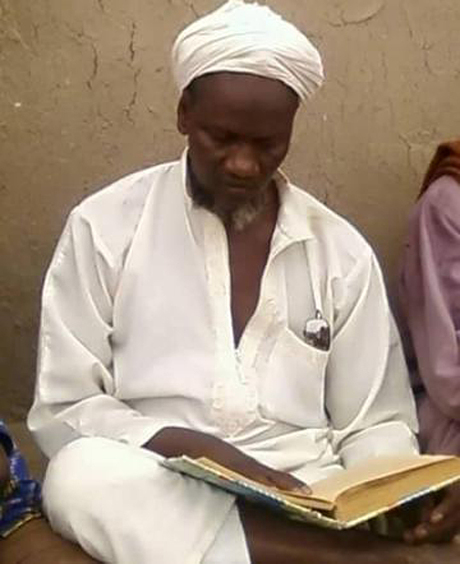
The Sahel’s Militant ‘Melting Pot’: Hamadou Kouffa’s Macina Liberation Front (FLM)
Publication: Terrorism Monitor Volume: 13 Issue: 22
By:

After the French-led military intervention in northern Mali in 2013, the leading jihadist groups there, including al-Qaeda in the Islamic Maghreb (AQIM), its affiliate Movement for Unity and Jihad in West Africa (MUJWA) and its local “front group” Ansar Dine, dispersed from the towns they held. One of the militant groups to emerge from the aftermath of this upheaval in Mali was the Macina Liberation Front (Front de Libération du Macina—FLM), which first became known in January 2015. The FLM, with estimates of the number of affiliated militants ranging from the low hundreds to as many as 4,000, represents a new militant trend in southern Mali and neighboring countries. This is because the FLM seems to be an updated version of its “parent” groups by incorporating:
- AQIM’s strategy for Mali—and sub-Saharan Africa more generally—and acting as a “front group” of Ansar Dine (which itself is a “front group” of AQIM) and disguising its connections to al-Qaeda;
- Ex-MUJWA militants who after the French-led military intervention in northern Mali neither fled to Libya with late AQIM southern commander Abu Zeid’s Tareq bin Zayed Brigade nor followed MUJWA leaders Hamadou Kheiry and Abu Walid al-Sahrawi in pledging loyalty to Islamic State leader Abu Bakr al-Baghdadi; and
- Ansaru-like historical narratives combined with the takfiri ideology of Boko Haram (now the Islamic State’s West Africa Province, or ISWA).
Moreover, in terms of its objectives, the FLM represents what Sahelian al-Qaeda mastermind, Mokhtar Belmokhtar, and his relative and former MUJWA leader, Oumar Ould Hamaha, always wanted: a front throughout the southern Sahara (AP, December 3, 2012). In fact, Belmokhtar reportedly “outsourced” operations in southern Mali through Ansar Dine to the FLM (Liberte Online [Algiers], August 16).
This article provides a background on the leadership, ideology, strategy and attacks of the FLM, and places these attributes within the context of regional trends in the Sahel. Understanding the FLM may, in turn, assist intelligence and counter-insurgency professionals anticipate the “next war” in the Sahel.
Leadership
The leader of the FLM is Hamadou Kouffa, a marabout (religious teacher) over 50 years old who grew up in the small town of Niafunke in central Mali (Malijet, January 23). Kouffa rose to prominence on January 10, 2013, when he led an offensive by AQIM, Ansar Dine and MUJWA into the town of Konna in central Mali, and declared himself the “Sultan of Konna” (Mali Actu, July 16). This was the militants’ deepest push toward Mali’s capital of Bamako during the entire “jihadist occupation” of northern Mali. However, the over-ambitious offensive backfired when it compelled the French to begin their military intervention in that region, which subsequently ousted the militants there.
Kouffa’s popularity came in part from his mastery of radio as a tool for communication in his native Fulani language (Telegraph [London], September 23). Because of this, many of Kouffa’s recruits are Fulanis, and the FLM is often considered in Malian media to be a “Fulani movement.” Nonetheless, there is little evidence to suggest that the FLM incorporates Fulanis in West Africa beyond Mali and its borderlands.
In terms of religious affiliation, Kouffa—like his mentor, Ansar Dine leader Ag Ghaly—joined the Dawa movement (often also known as Tablighi Jamaat), when Gulf-funded “humanitarian organizations” arrived in Mali to preach their conservative brand of Islam in the 1990s (Mali Actu, August 21). Kouffa implemented this ostensibly non-violent conservative ideology until the period from 2001 to 2008, when he visited Afghanistan, India and Qatar, before coming back to Mali with more extreme views. In the context of the war in Mali in 2012, he also condemned senior religious leaders and judges for corruption and not implementing Shari’a. When Kouffa ousted control of the central Malian town of Konna from these rivals, he announced that:
While his relations with AQIM, MUJWA and Ansar Dine developed when he was fighting with those groups in central Mali in 2013, Kouffa is only rumored to have “nursed” the idea of joining with Nigeria-based militants in Boko Haram or Ansaru, which may have taken part in the Kouffa-led offensive in Konna in January 2013 (Mali Actu, September 21; African Arguments, January 20, 2014). Nonetheless, Kouffa’s takfiri ideology and temperament has led a Malian defense official to label him as a new “Abubakr Shekau,” referring to the Boko Haram and now ISWA leader, and to accordingly label the FLM as Mali’s new “Boko Haram” (Jeune Afrique [Paris], August 23),
Ideology and Strategy
The FLM’s ideology draws on narratives of reviving the 19th century Fulani-led Macina Empire, which existed in present-day Mali, to support its legitimacy. Similarly, AQIM presents narratives showing that it seeks to restore the Andalusian empire in southern Spain, MUJWA seeks to revive the “jihad” of Alhaji Umar Tell and Ansaru seeks to revive the “jihad” of Usman Dan Fodio. Though Kouffa’s Salafist-inspired version of Islam is of a different variety than that of the historical jihadist forefathers of West Africa, his expropriation of historical narratives of the region adds a layer of sophistication—and, potentially, attraction—to the FLM’s recruitment efforts.
In this respect, the FLM seems to reflect an outcome of AQIM leader Abdelmalek Droukdel’s strategy to plant the “seeds” for the implementation of Shari’a in Mali dating back to 2012 or earlier. In documents that reporters found in Mali after the French-led intervention in 2013, Droukdel advised AQIM and partner militant groups to “pretend to be a ‘domestic’ movement that has its own causes and concerns,” and to avoid “showing that we have an expansionary, jihadist, al-Qaeda or any other sort of project” (AP, February 15, 2013). Thus, the FLM is portraying itself as a “liberation” movement and—at least publicly—hiding its ties to Ansar Dine, or AQIM or any other al-Qaeda group has allowed FLM to remain under the radar of international counter-insurgency efforts, which was exactly Droukdel’s (and Osama bin Laden’s) justification for this type of strategy.
Attacks
Despite the FLM’s low visibility, the group’s record of attacks shows that they have been able to extend AQIM’s reach into central and southern Mali. FLM attacks in Mali in 2015 include the following:
· On April 22, two FLM militants raided the village of Dogo, and killed Issa Dicko, the head of the village, after accusing him of being paid by the Malian government, the UN and French Armed Forces (Radio Nata [Gao], April 14).
· On May 4, the FLM destroyed the mausoleum in Hamdallaye, Mali, of Shaykh Sekou Amadou, who founded the Macina Empire in 1818, but whose mausoleum the FLM considers to be an idolatrous shrine (AP, May 4)
· On June 27, Ansar Dine claimed its Khalid Ibn al-Walid Brigade, coming from the Mauritanian border, had joined with the “Macina Brigade” to attack Malian soldiers in the town of Nara (Reuters, July 6).
· On August 10, FLM militants looted several shops in Tenenkou in Mopti, in central Mali, and blew up a vehicle in a reconnaissance convoy of the Malian Armed Forces in the town of Dia, killing three Malian soldiers (Mali Actu, August 11).
· On August 12, three “supporters of Kouffa” were arrested by Malian security forces after they took part in an attack on the Byblos hotel in the town of Sevare, Mali, with Belmokhtar- and MUJWA-founded al-Murabitun. The attack led to the deaths of 10 civilians and three Mission multidimensionnelle intégrée des Nations unies pour la stabilisation au Mali (MINUSMA) employees. It was claimed by one of Kouffa’s deputies, Souleyman Mohamed Kennen, in a brief phone conversation with AFP, where he said that “the hand of Allah has guided the mujahideen of Sevare against the enemies of Islam,” that Kouffa gave his “blessing” for the attack to be carried out and that the “mujahideen” were also behind the killing of three Malian soldiers in Mopti several days earlier (Mali Actu, August 12).
· On August 15, two FLM militants killed Aladji Sekou, a 63-year-old imam and local MP from Barkerou, Mali, because, according to Sekou’s nephew, Sekou was their religious “opponent” (Le Figaro [Paris], August 15).
· On September 9, Kouffa reportedly held a meeting in Dogofri in Segou, where he told his supporters to “strive harder to disseminate and implement Shari’a,” and planned attacks for the eve of the celebration of Eid al-Kabir (Mali Actu, September 11).
· On September 12, FLM militants on motorcycles killed two police officers and two civilians in an attack on a security post in the village of Ouenkoro in Bankass, Mopti, which is near the border with Burkina Faso (Malijet, September 17).
· On September 19, FLM militants on motorcycles attacked a security post at Bih in Mopti, killing two policemen and two civilians (Le Monde, September 23).
· On October 9, 50 FLM militants were suspected of an attack where militants on motorcycles waving black flags killed three civilians in Dounapen in Mopti, near the Burkina Faso border, after they carried out an attack several hours earlier on the gendarmerie post at Samorogouan in Burkina Faso (Net Afrique, October 9).
At the same time, however, there have been counter-terrorism successes against the FLM. For example:
· On September 7, Kouffa’s Burkinabe “senior assistant” and former member of the Islamic Police in AQIM- and Ansar Dine-controlled Timbuktu, Hassan Dicko (a.k.a. Abu Leila), was one of three militants arrested in Bamako. After his arrest, the security forces learned he was liaising between the FLM and Ansar Dine, and that FLM intended to be the “Ansar Dine of the south [of Mali].” The two other militants who were arrested with Dicko were the Ivorian Ayouba Sangare, one of Ag Ghaly’s assistants and a weapons provider to the FLM, and the Malian Ali Sangare, a transporter of weapons who played a key role in the attack on the residence of the Burkina Faso contingent of MINUSMA in Bamako (Le Figaro [Paris], September 7).
· On September 14, Algerian security forces intercepted a shipment of arms in Borj Badji Mokhtar in southwestern Algeria near the Malian border, which were suspected of being part of a delivery to the FLM (Ennahar Online, September 15).
· On September 17, Malian security forces arrested three FLM militants, who were operating near the border with Côte d’Ivoire (Mali Web, September 17).
FLM attacks and arrests show that the FLM is closely connected to militancy in Mali, but also to Burkina Faso, Côte d’Ivoire, Mauritania and Algeria.
Conclusion
Kouffa’s apparent ability to draw on AQIM’s strategic guidance and historical narratives to justify FLM’s jihad in post-civil war Mali contributes to the FLM’s effectiveness in recruitment and carrying out attacks. At a time when AQIM and Ansar Dine are operating in northern Mali and ISWA is pre-occupying militaries further south toward Nigeria, the FLM is becoming yet another destabilizing militant force in the region. If the FLM continues to escalate attacks and spread further into countries like Burkina Faso and Côte d’Ivoire, international and national counter-insurgency forces in the region will continue to see their resources strained and their collective will tested.
Jacob Zenn is an Associate Fellow of African and Eurasian Affairs for The Jamestown Foundation.





